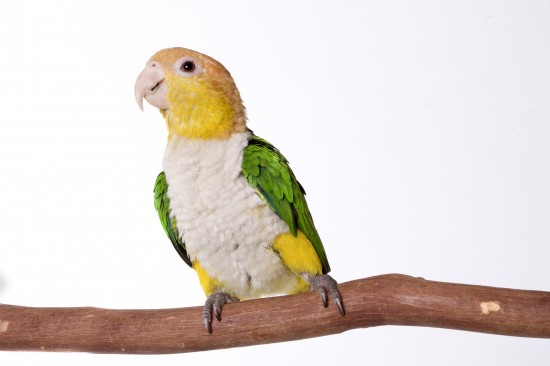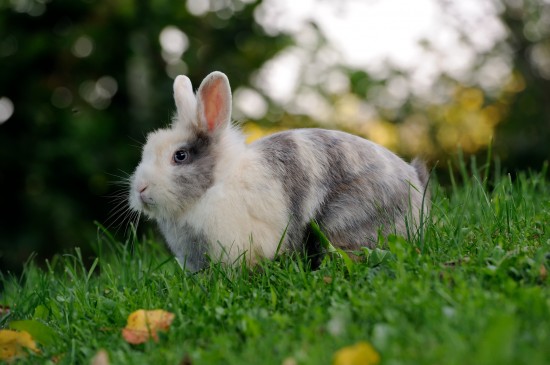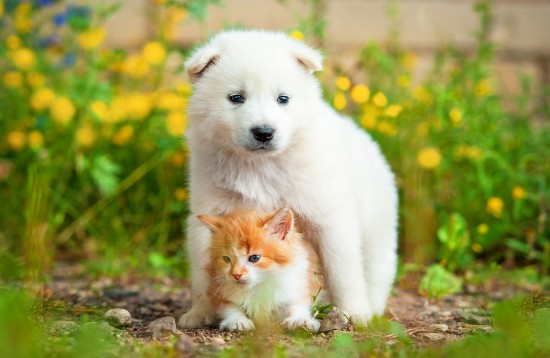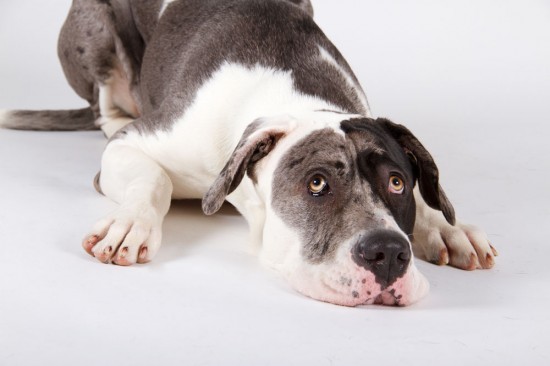
People are often surprised to learn that animals get the same
aliments that humans do- from heart disease to diabetes to
cancer. Among the other conditions that animals can develop are
dental and periodontal disease. Gum erosion, inflamed gums,
tooth decay, tooth root infections and fractured teeth with pulp
exposure- dogs and cats are at risk for all these.
Since animals can’t brush their own teeth, tartar and plaque
accumulate to cause problems. Besides causing bad breath and
pain (note that animals will tolerate more pain than humans
before manifesting obvious signs of discomfort such as
reluctance to eat), the plaque build-up also harbors bacteria
that is shed into the blood stream to affect other organs of the
body.
While tartar accumulation and gum inflammation can be minimized
by feeding dry foods and giving chew toys and tartar control
treats, there is often individual and breed predisposition to
developing dental disease. Some dogs and cats, despite being on
a 100% dry food diet, will still get plaque. Certain dog breeds,
especially toy and miniature dog breeds are especially prone to
periodontal disease. These breeds are also prone to retaining
their baby teeth. These extra teeth which can lead to problems
often necessitate removal.
Certain cat breeds such as Siamese and Abyssinians seem to be
particularly prone to gingivitis (inflamed gums). In cats,
stomatitis (inflamed mouth) can signal certain diseases such as
infection with the feline immunodeficiency virus (FIV).
What can a dog/cat owner do? The most important part in managing
dental disease is, as for ourselves, daily brushing. While some
cats and dogs will simply not tolerate this, most can be taught
to deal with a finger brush or small toothbrush in the mouth
with pet toothpaste (not human products). It may take time and
patience to train your pet to accept brushing and it’s best to
start with puppies and kittens to let them get used to gentle
massaging of the gums and teeth. By starting with a bit of baby
food, the pet learns that the brush is tasty and will tolerate
this. Then chicken or beef flavored toothpaste can be
introduced. The toothbrush is applied to the outside of the
front teeth (incisors), the fangs (canines), and the back teeth
(premolars and molars), working between the cheek and the
outside of the tooth where plaque build up occurs. This can be
done without having to open the animal’s mouth but by simply
lifting up the lip and moving the brush between the cheek and
teeth.
Most animals will cooperate with this technique but are less
tolerant of having their mouth opened wide. Fortunately, less
buildup occurs on the inside of the teeth. If inflamed gums are
more of a concern without the presence of tartar, chlorohexidine
based gels and solutions can be helpful to swab on gum and
minimize oral bacteria. Dental brushing on a regular basis,
ideally every day, but even 3 times a week, makes a difference.
For dogs and cats that already have considerable dental tartar
and/or periodontal disease, a more thorough cleaning is
necessary. Cleaning the teeth is not just for cosmetic purposes,
although your pet’s breath will undeniably smell better
afterwards. It is beneficial for the pet’s health since the
bacteria harbored in the mouth systemically affects all the
organs of the body. In some cases of inflammation of the liver
or kidneys or heart murmurs, bacteria often play a contributing
role.
A dental prophylaxis is best done under anesthesia by your
veterinarian. There are facilities, usually pet stores and
grooming salons, that will offer “anesthesia-free dentals” or
“standing dentals” or “hand scaling”. While this seems ideal
since it avoids anesthesia for the pet and is less expensive,
there are many drawbacks. While a superficial cleaning leaves
the teeth looking apparently clean, deep cleaning is not
possible, and an extensive amount of plaque can be left under
the gum line. When a compromised tooth is encountered that
necessitates extraction or other procedure (i.e. root canal),
this cannot be addressed. In scaling the teeth, either by hand
or with a cavitron, small scratches are made on the tooth’s
surface and unless the teeth are polished, this roughened
surface provides a foothold for bacteria to build up again.
Also, in the process of cleaning the teeth, bacteria are
liberated and go into the blood stream. Outside of a hospital
setting, antibiotics are not given to eliminate these bacteria
that systemically affect the animal nor are painkillers
administered.
For this reason, at veterinary hospitals, an injection of
antibiotics is given at the time of the dental prophy, and if
there are extractions and/or the presence of periodontal
disease, antibiotics and painkillers are dispensed. Dental
prophies done at the hospital also provide the occasion to
remove minor lumps as well as to do other procedures that the
animal may not tolerate in an awake state – thorough ear
cleanings, toe nail trims and radiographs of limbs or back.
Note, however, dental prophies are not done at the same time as
major surgeries such as abdominal or orthopedic procedures. This
is to avoid contamination of the sites with the oral bacteria
released with cleaning teeth.
Most hospitals can do prophies and do extractions, but not all
do certain techniques. These include “flaps” with extractions, a
technique that allows the hole to be closed over and sutured
with absorbable sutures and dental radiographs which allow a
more thorough evaluation of tooth and bone damage. These more
specialized procedures are usually done by veterinarians and
technicians who have undergone additional training in veterinary
dentistry.
Still, there are some procedures that necessitate referral to a
veterinary dentist, that is, a specialist who can do more
difficult procedures such as root canals. This technique is done
to preserve fractured major teeth such as the canines (the
fangs) or carnassials (the big molar teeth) rather than
extracting them.
There are always concerns about anesthetizing an older animal,
and it is often the middle-aged or older pet that has
significant dental disease. However, there are ways that this
can be done safely. Your veterinarian will recommend doing blood
work and urinalysis before anesthetizing your pet. It is
important to get a “picture” of your pet’s body’s function, and
this is best done by analyzing liver and kidney enzymes,
electrolyte levels and red blood cell and white blood cell
counts.
If there are significant problems noted beforehand, a dental
cleaning may be delayed and further testing such as radiographs
and ultrasound or treatment with continued monitoring may be
recommended. If no problems are found in the blood and urine
samples, a “baseline” or what is normal for your pet has been
established. This is an important point of reference in the
future as your pet ages and helps your veterinarian determine
significant changes in your pet’s health as your animal gets
older.
There are several precautions that are taken on the day of
anesthesia for a dental prophy. These include:
* A physical exam (even if one was just done the day before;
like us, an animal’s status can change overnight)
* Antibiotics to eliminate bacteria liberated during a dental
prophy
* Pain killers to minimize any pain associated with the procedure
* Use of an intravenous catheter for administration of fluids
(which allows for the perfusion of organs and control of blood
pressure)
* Monitoring blood pressure with a Doppler
* Monitoring the patient’s oxygen content with a pulse oximeter
* An EKG that monitors the heart’s electrical activity
* Close supervision by a veterinary technician who monitors the
animal’s depth of anesthesia, breathing pattern, heart rate and
body temperature
It is ideal after a dental prophy to commit to keeping the
bacteria at a minimum with regular brushing. This needs to be
done 3-7 times per week to be effective. But even if this is not
feasible, you have taken a significant step in improving and
extending your pet’s life.
If you have questions regarding dental disease, don’t hesitate
to contact your veterinarian.
The above is general veterinary information. Do not begin
any course of treatment without consulting your regular
veterinarian. All animals should be examined at least once every
12 months.
 Questions To Ask Yourself Before Offering Your Dog A Treat
Questions To Ask
Questions To Ask Yourself Before Offering Your Dog A Treat
Questions To Ask
 Parrot Species - The Caique
Parrot Species -
Parrot Species - The Caique
Parrot Species -
 How To Promote Good Digestion In Rabbits
How To Promote Go
How To Promote Good Digestion In Rabbits
How To Promote Go
 Tips To Help Establish A Happy Garden Share With Your Canine & Feline Friends
Tips To Help Esta
Tips To Help Establish A Happy Garden Share With Your Canine & Feline Friends
Tips To Help Esta
 Addisons Disease In Dogs
Addisons Disease
Addisons Disease In Dogs
Addisons Disease
Copyright © 2005-2016 Pet Information All Rights Reserved
Contact us: www162date@outlook.com